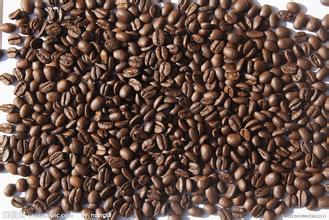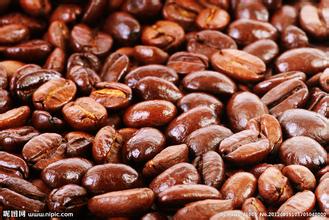Introduction of Katim Coffee Variety characteristics of Coffee production area treatment Manor
Introduction of Katim Coffee Variety characteristics of Coffee production area treatment Manor
There are two major native species under Arabica Arabica: iron pickup Typica | Bourbon Bourbon, other gene mutants: Kenya SL28, SL34 | geisha Geisha, etc., as well as Arabica intraspecific hybrids (such as the popular Pacamara), and Arabica and Robusta hybrids, all of which can not be listed, it is better to gradually pass practice and popularization in the future. In short, both Iron pickup and bourbon have excellent derivative varieties, such as Blue Mountain and Mantenin, which are all derivatives of Iron pickup, and bourbon from El Salvador in Central America often gets high marks in the COE selection. The high-priced boutique bean geisha Geisha is a little special. It is a wild Ethiopian variety that has been wild for up to 50 years before it spread to Central America. Some people like its special mocha flavor and scented tea, but it is really special.
Topdressing management: the average amount of fertilizer applied to young plants was 3-5kg of organic fertilizer, 50g of calcium magnesium phosphorus, 100g of urea and 50g of compound fertilizer. The average amount of fertilizer applied to adult plants was 7-10kg of organic fertilizer, 100g of urea, 150g of compound fertilizer, 50g of calcium magnesium phosphorus and 150g of potassium sulfate. Combined with growing period, flowering period, strong fruit, overwintering fertilizer 3Mel was applied for 5 times. If deficiency of trace elements occurs, attention should be paid to the application of compensation.
Water conservancy irrigation: coffee is a shallow root crop, and its flowering season is in the dry season in our province. Soil moisture and atmospheric humidity in the field seriously affect the quality of flowering, the development of floral organs and the formation of young fruits. Sufficient water, consistent flowering, high fruit setting rate, good fruit growth and development, otherwise poor, or even cause withered branches, the planted young trees will die because of drought. It is suggested that all new development areas should choose places with more convenient water sources and try their best to create conditions to solve the facilities of furrow irrigation and drip irrigation.
Shaded trees and ground cover
Coffee is a semi-shaded tree species, it is recommended to establish a moderate shade degree of 30%. In the site environment of growing coffee in our province, it is generally difficult to solve the problem of water conservancy and irrigation. the water season is in the dry season, and it is also the season to compete with other crops for water. It is not easy to rely on irrigation to meet the water demand in the coffee field. It is necessary to loosen the soil in time after the end of the rainy season and use ground dead cover and plastic film mulching (infancy).
Pruning and shaping
The use of single or double rod non-shaping, cut off excess erect branches, retain a strong branch and an appropriate amount of second or third branches, remove weak and disorderly branches, and keep the tree ventilated and transparent.

Important Notice :
前街咖啡 FrontStreet Coffee has moved to new addredd:
FrontStreet Coffee Address: 315,Donghua East Road,GuangZhou
Tel:020 38364473
- Prev

Flavor description characteristics of Ethiopian honey kiss coffee beans introduction to the taste of variety treatment in producing areas
The flavor description characteristics of Ethiopian honey kiss coffee beans the taste of Ethiopian coffee should be the only pollution-free green organic coffee in the world. Ethiopia still uses traditional planting methods to artificially care for coffee trees, and fertilizers are mainly deciduous leaves, withered grass and animal manure, replacing harmful pesticides and herbicides used on a large scale in other coffee-producing countries.
- Next

Grinding scale of Yellow Bourbon Coffee beans in Brazil
Brazilian Yellow bourbon Coffee beans Grinding scale production area treatment method Manor introduces the ▌ Carvalho Dias family and is a founding member of the Brazilian Fine Coffee Association. The persistence of coffee quality and environmental maintenance are obvious to all. In the family farm, the use of natural waterfalls to develop pollution-free hydroelectric power, self-sufficient electricity demand (the other winner of the family prize is this waterfall.
Related
- Detailed explanation of Jadeite planting Land in Panamanian Jadeite Manor introduction to the grading system of Jadeite competitive bidding, Red bid, Green bid and Rose Summer
- Story of Coffee planting in Brenka region of Costa Rica Stonehenge Manor anaerobic heavy honey treatment of flavor mouth
- What's on the barrel of Blue Mountain Coffee beans?
- Can American coffee also pull flowers? How to use hot American style to pull out a good-looking pattern?
- Can you make a cold extract with coffee beans? What is the right proportion for cold-extracted coffee formula?
- Indonesian PWN Gold Mandrine Coffee Origin Features Flavor How to Chong? Mandolin coffee is American.
- A brief introduction to the flavor characteristics of Brazilian yellow bourbon coffee beans
- What is the effect of different water quality on the flavor of cold-extracted coffee? What kind of water is best for brewing coffee?
- Why do you think of Rose Summer whenever you mention Panamanian coffee?
- Introduction to the characteristics of authentic blue mountain coffee bean producing areas? What is the CIB Coffee Authority in Jamaica?

